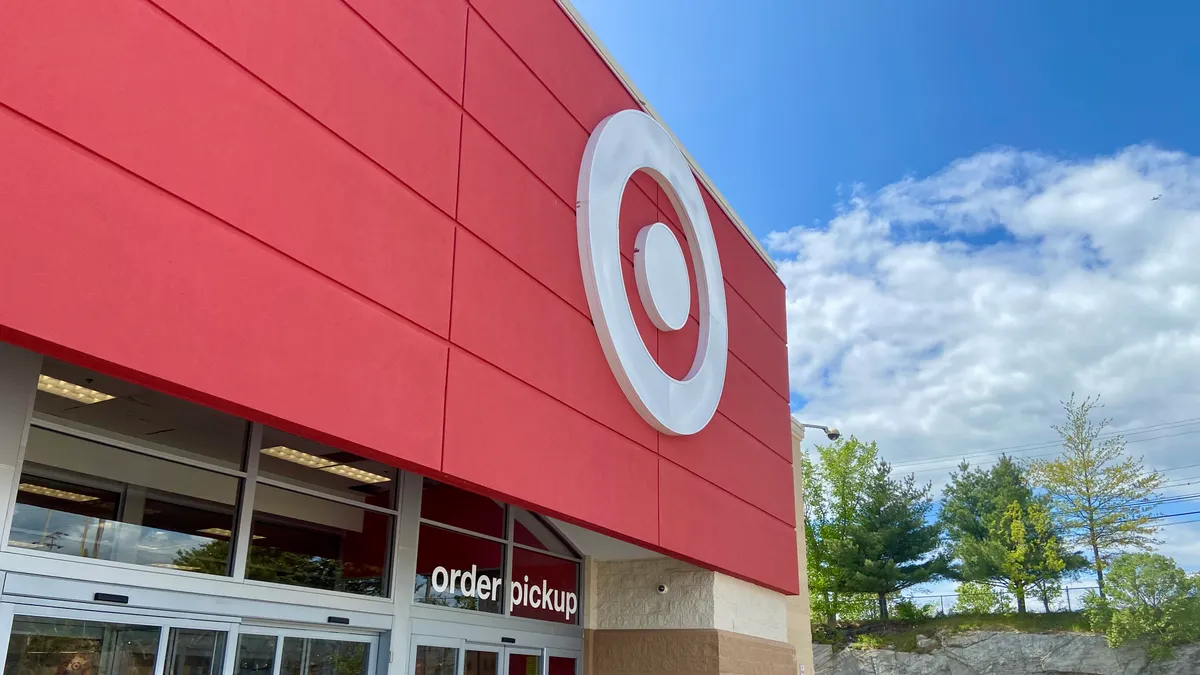Dive Brief:
- Target credited its inventory and expense discipline with a sharp spike in profitability in Q3 even as sales declined, with gross margin up 2.7 percentage points from last year and earnings beating the company’s own forecasts.
- Inventories were down 14% YoY, with inventories in discretionary categories down even more, at 19%. As Target heads into the holiday selling season, CEO Brian Cornell said the retailer was sticking to its conservative inventory position on “markdown-sensitive” categories.
- “This provides our team the necessary flexibility to adjust to volatile trends, something that has served us well all year,” Cornell told analysts on the company’s earnings call. “That does not mean we're backing off a newness. While we're cautious about the size or inventory commitment, we're leaning into the amount of innovation featured in our assortment.”
Dive Insight:
Target’s operations have faced “unusual and rapidly changing external conditions” since the pandemic began, outgoing Target COO John Mulligan explained on the call.
“After the onset of the pandemic, we couldn't secure enough inventory to satisfy the explosion in demand for our products,” said Mulligan, who is set to retire early next year. “Then in early 2022, the period of rapid growth in discretionary categories suddenly reversed. We quickly moved from having too little inventory to have way too much.”
With the swing from too little to too much inventory came swings in the company’s profitability. Operating margins hit historic lows last year as Target’s distribution centers and store backrooms filled up “well beyond optimal levels,” Mulligan noted.
But after taking dramatic measures to clear inventory through 2022, Target is operating more smoothly. In Q3, the company made nearly $300 million more in operating profit compared to last year even as its top-line sales declined by more than $1 billion.
As executives were careful to note, inventory management hasn’t just been a matter of holding levels down; the retailer is still chasing profitable sales and inventory where it sees opportunity. Going into the season, for instance, Target boasted of having 10,000 new items for the holidays.
Cornell gave some credit to the retailer’s suppliers for its ability to offer customers enticing inventory in a cautious spending environment. “After several years in which our vendors were focused on raising production volumes in the face of unprecedented demand, we’re encouraged by the focus on newness and innovation we're seeing from them,” the CEO said.
Target’s operations and supply chain have also helped the retailer meet demand when it surfaces. Even with less inventory, “the team has delivered meaningfully improved reliability and in-stock metrics this year,” Mulligan said, noting that overall in-stocks were up by nearly 1 percentage point from Q2 and up 3 percentage points YoY.
Helping to keep shelves stocked are shrinking import lead times — shorter by two weeks compared to 2022 — and a nearly 10 percentage point improvement in purchase order fill rates, according to Mulligan.
Those improvements brought benefits downstream. “With a combined benefit of a faster supply chain and a simultaneous reduction in inventory levels, all of our supply chain facilities stayed at or below our desired capacity thresholds to all 13 weeks of the third quarter of this year, compared with only three of 13 weeks in Q3 of 2022,” the operating chief noted.













